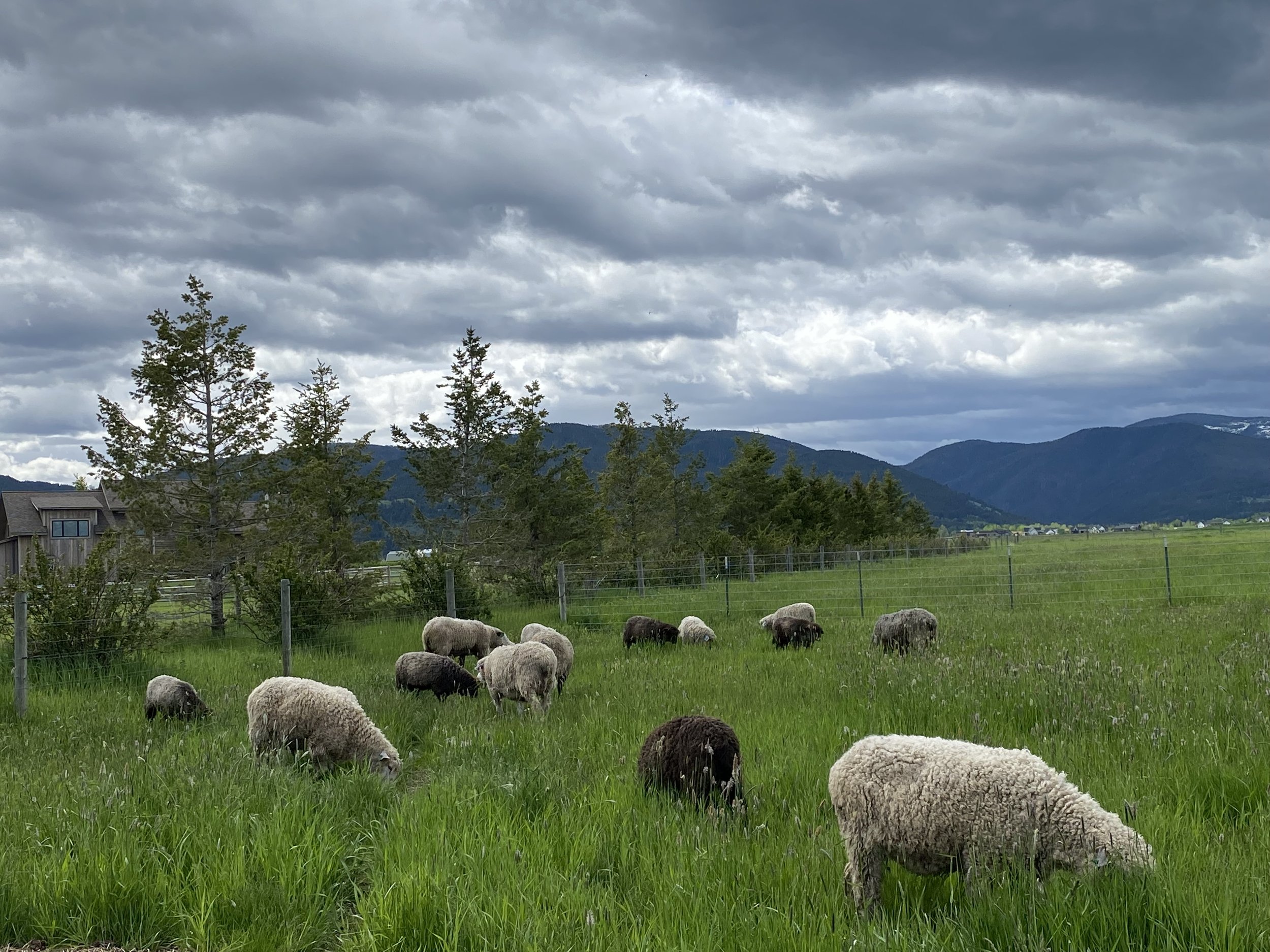
2024 Projects
Saving breeds on the ground from the verge of extinction.
-
Milking Shorthorn
. Milking Shorthorn have a long history dating back to the 18th century in the UK, where in the Valley of the Tees River, a strain of dairy Shorthorn was developed. Up until the 1990's Milking Shorthorn were known as Dual Purpose Shorthorn - the name change better suited their modern purpose.
Since the 1970's in an effort to widen genetic diversity within the Milking Shorthorn population and to keep up with modern demands in terms of dairy production, breeders have incorporated outside genetics into the herd as a whole. The majority of Canadian Milking Shorthorn are 75% in purity or higher. There is sometimes confusion when conservation organizations list Milking Shorthorn as "critical" in status - registrations are higher - but the count is based on original Milking Shorthorn, descending directly from lines established in the 1700's, without the introduction of outside genetics.
Milking Shorthorn have maintained characteristics which are true to the breed. Inclusive of efficient feed conversion, particularly strong feet and legs, high fertility rates, milk production averaging 9,000kgs. As well as being breed leaders in temperament and longevity.
The purchasers of the Lynmark Farms embryos, will be provided with 100% Milking Shorthorn semen in order to further the aim of maintaining purebred genetics, whilst replenishing the HLC gene bank through collections.
-
White Park
White Park were first introduced into Canada in the 1940's when Winston Churchill sent across two females from the UK. The descendants of these cows were moved to the Bronx Zoo and after which were released to the King Ranch in Texas, where they remained for a number of years. White Park were subsequently brought back to Canada. In recent years commendable efforts have been made to ensure the survival of this unique breed in Canada.
White Park are an ancient breed, existing for around 2,000 years. Utilized as draught, meat and milk animals - White Park have an especially tender, flavourful meat, which commands premiums in speciality markets. In terms of production - White Park are best suited to a non-intensive setting. Right now the focus is on the preservation of the breed in Canada - but these traits are worth remembering.
Currently, there are three herds in Canada. We are working towards DNA verification for both breed standard and parentage.
An embryo flush resulted in one embryo being stored, using the imported Chartley Miles semen. We are hoping for a calf as a result of AI, using the semen in 2024.

-
Leicester Longwool
The Leicester Longwool reintroduction project, is aimed at assisting the international population. With less than 500 Leicester Longwool left in their native UK.
As such, HLC is looking for those interested in taking part in this project, in particular for breeders. We are also exploring options for the future import of semen.

-
Sheep semen import
In partnership with OC Flock Canada and Heritage Sheep Reproduction, US - HLC imported UK semen for both our inventory and breeders. Currently, Shropshire and Dorset Horn are due to arrive in mid-2024, with the possible addition of Leicester Longwool and Cotswold in 2024/25.

-
Lacombe
Lacombe are a composite breed developed beginning in 1947 - as their name suggests in Lacombe, Alberta. Originally a cross of Chester White, Danish Landrace and Berkshire, their development was a fairly rapid one, being introduced as a new breed in the 1950's.
Lacombe were meant to display a docile temperament and rapid weight gains. Alongside large litter sizes. Traits which hold true today. Lacombe are faster gaining than other heritage swine breeds - and are also ideal for those looking for a leaner pork..
In 2024, we plan to introduce new genetics to the herd as a whole, though AI and live breedings. Our focus is also on DNA work for parentage verification and bringing registration paperwork up to date.

-
Swine
Having commenced work on the HLC conservation list, it became immediately apparent, that swine as a species have extremely low numbers of breeders and registrations as a whole.
As such, HLC plans to host a webinar in 2024 to provide educational information, as a basis for new and established herds.
After undertaking this step, we will give consideration to the introduction of new genetics in 2025.

